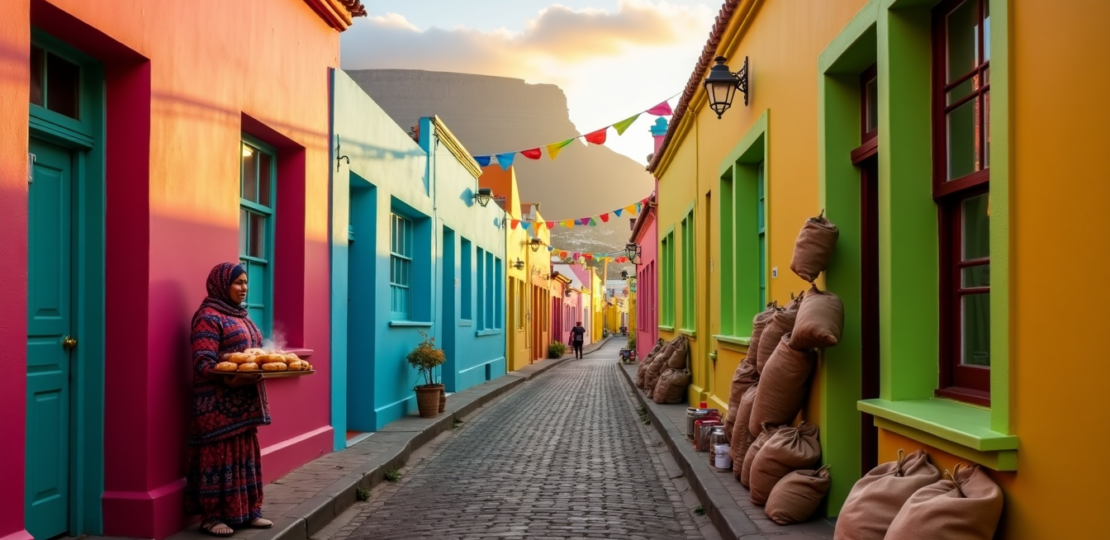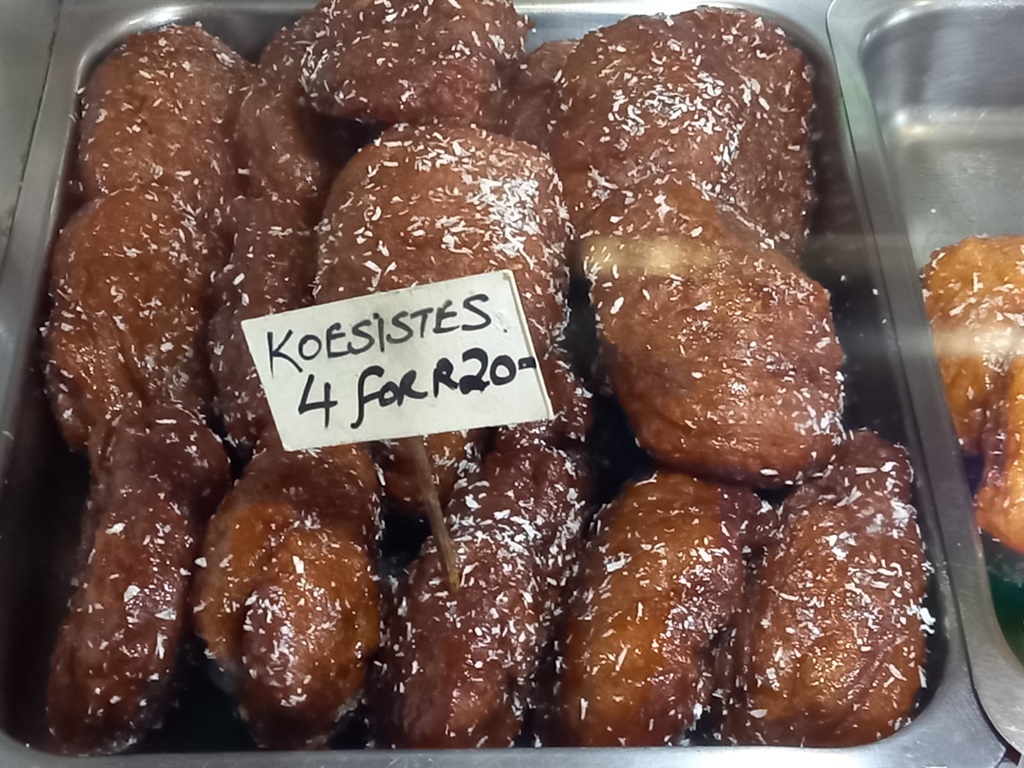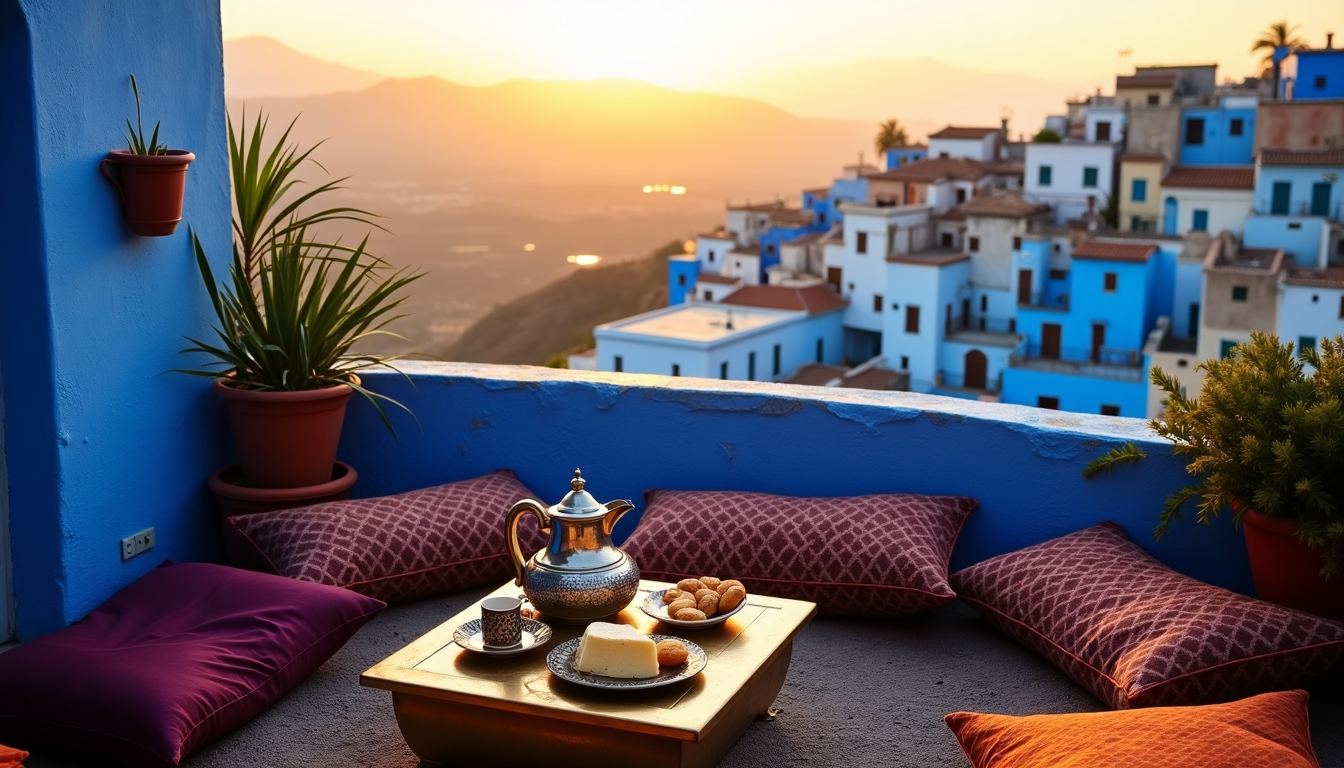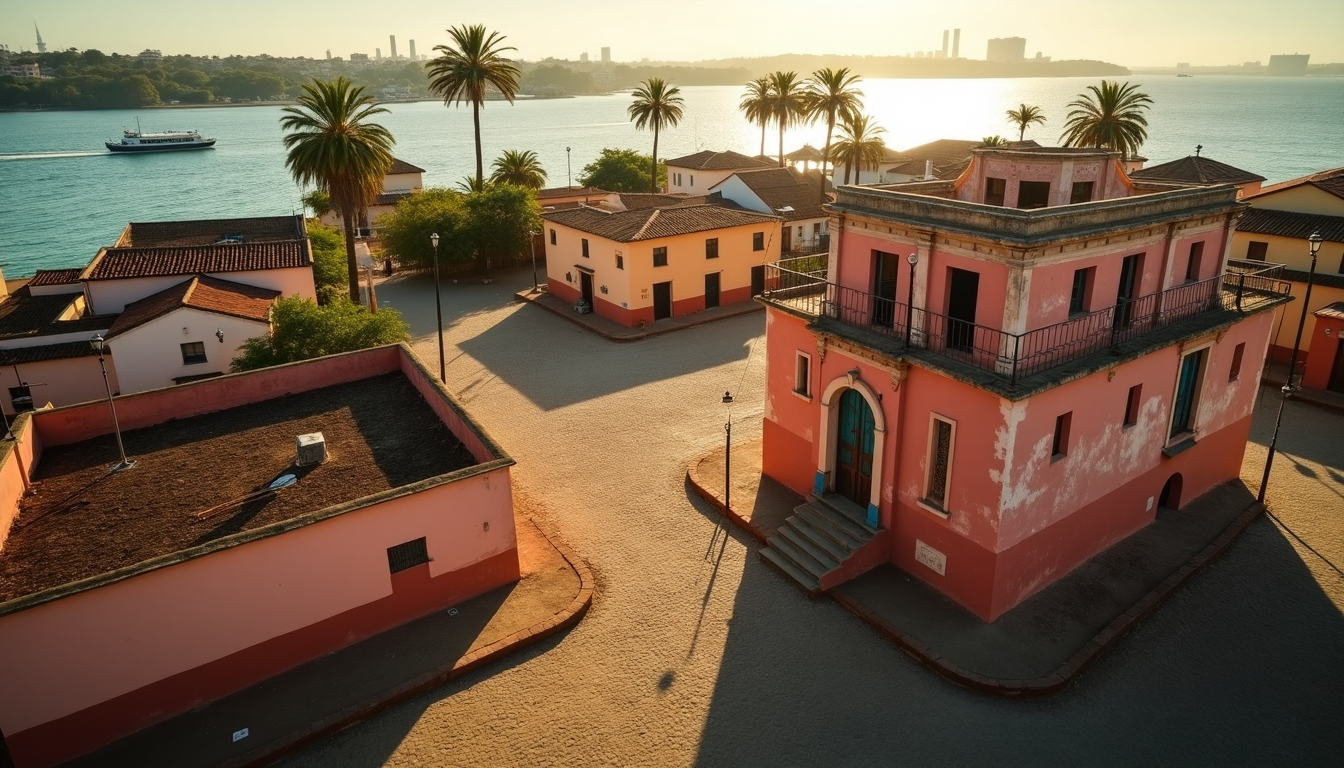15 Hidden Gems in Bo-Kaap Neighborhood: Local Secrets for 2025
February 1, 2025 | by arbindbodr@gmail.com

Bo-Kaap stands as one of Cape Town’s oldest surviving communities that dates back to the 1760s. Most visitors know it for its Instagram-worthy colored houses, but we’ve found much more beneath this historic district’s surface.
Just five minutes from Cape Town’s CBD, this area has the largest collection of pre-1850 South African architecture. These vibrant houses were once required to be white, but now they showcase a beautiful blend of Cape Dutch and Georgian styles. Each color represents the Cape Malay community’s freedom and cultural identity.
We’ve explored every corner of this cultural gem and can’t wait to share 15 hidden spots that most tourists never find. These lesser-known places go beyond the usual tourist trail and offer authentic experiences, from secret rooftop gardens to underground art galleries.
Hidden Spice Shop Treasures at Atlas Trading

Image Source: Atlas Trading Company
A pink house on Wale Street houses Atlas Trading Company, which stands as Bo-Kaap’s spice trade cornerstone since 1946. Brothers Shouket and Wahab Ahmed run this family business that brings wholesale spices to everyone who walks through their doors.
Atlas Trading History and Heritage
The store’s story weaves deeply into Bo-Kaap’s culinary heritage, especially with Cape Malay cooking traditions. The unique blend of European dishes and Eastern spices dates back to the earliest settlements in the 1650s. Cape Town’s oldest spice store preserves authentic flavors that have shaped the neighborhood’s cuisine through generations.
Unique Spice Blends and Products
The store’s vast collection has:
- More than 150 carefully crafted spice blends that cater to Cape Malay, Indian, and Thai cuisines
- 30 signature Atlas Trading creations
- Their bestselling Leaf Masala, a 12-spice blend that works magic in curries
On top of that, the shop stocks imported Indian products, beans, rice, dried fruits, and incense sticks. The team grinds every spice on-site from whole ingredients to ensure 100% purity without additives.
Local Shopping Tips
The morning air fills with the strongest aromatic fragrances, making it the best time to visit. The shop stocks pre-packed spices at the front, but you’ll find better value in bulk spices from large boxes at the back. The wall next to the counter displays the shop’s recipes, which give you great ideas while you wait in line.
Secret Rooftop Garden Cafe

Image Source: How Far From Home
Batavia cafe sits above the bustling streets with its ceiling draped in hanging plants and a delightful outdoor courtyard. The venue blends traditional and modern elements through its thoughtful decor.
Cafe Ambiance and Views
The rooftop seating area showcases breathtaking views of Table Mountain and Lion’s Head. Several intimate rooms make up the space and each room has its own unique atmosphere that feels welcoming. Tables adorned with plants and fresh flowers create a peaceful garden oasis in the heart of the city.
Signature Dishes
The menu puts a modern spin on Cape Malay cuisine. Notable offerings include:
- Shakshuka with poached eggs in cumin-spiced tomato sauce
- Homemade granola and blueberry flapjacks
- Chicken sandwich with Japanese mayo
- Butter chicken curry and slow-cooked oxtail
The cafe’s signature chai latte captivates guests with its smooth, silky texture and rich flavor profile. Breakfast items cost between R18 and R70, while main dishes range from R55 to R85.
Best Times to Visit
The cafe shines brightest in the morning, before the midday heat takes over. Weekday afternoons provide a peaceful setting that lets you enjoy both the views and the menu. The cafe transforms into a cozy retreat during colder months with its warming log burner.
Underground Art Gallery in Bo-Kaap

Image Source: Living Canvas Wall Art
Gallery MOMO is a hidden artistic gem nestled in Bo-Kaap’s heart. This underground gallery space sits in a restored heritage building and creates an intimate setting where visitors can experience diverse artistic expressions.
Gallery History
Cape Town needed a space to showcase contemporary African art, and Gallery MOMO answered that call. The gallery represents artists from all over the continent and provides a platform for both new and seasoned talents. The gallery’s location in Bo-Kaap, a neighborhood that traces its roots back to the 1760s, creates a deep connection with the area’s rich cultural heritage.
Local Artist Exhibitions
You’ll find an impressive variety of artistic mediums here:
- Photography and paintings
- Sculptural installations
- Contemporary mixed-media works
- Traditional Cape Malay art forms
The gallery features rotating exhibitions that showcase Cape Malay people’s achievements, challenges, and contributions to South African culture. Each exhibition carefully weaves together artwork that tells powerful stories of heritage, resistance, and cultural preservation.
Visiting Information
Visitors can explore the gallery any day of the week, and guided tours are available if you ask. These tours give a great explanation of each exhibition’s historical context and artistic importance. The gallery’s intimate atmosphere helps visitors connect with the artwork and artists personally. You’ll get the best experience by joining a morning guided tour when natural light fills the exhibition spaces perfectly.
Family-Run Roti Workshop

Image Source: What The Saints Did Next
Skilled home cooks welcome visitors into their kitchens along the narrow streets of Bo-Kaap neighborhood. These family-run classes provide a genuine window into Cape Malay culinary traditions through intimate roti-making workshops.
Traditional Roti Making Process
A simple mixture of flour, water, and salt starts the journey of roti making. Participants take their time to knead the dough and let it rest for 10-15 minutes. The dough then goes through a remarkable change. They spread it with melted butter, twist it, and carefully coil it into a double bun shape. These buns need time in the freezer before becoming plate-sized circles ready for frying.
Workshop Experience
Small groups of 8-10 participants learn through direct hands-on practice. The workshop has sections on:
- Traditional spice mixing techniques
- Authentic roti and samosa folding
- Creating dhaltjies (chili bites)
- Making Cape Malay curry from scratch
These sessions blend cooking lessons with rich cultural exchange. Families share Bo-Kaap’s heritage stories between cooking steps, making each moment special.
Booking Details
Classes happen weekly on all days except Fridays and Sundays. Weekday sessions start at 10:30 AM while Saturday classes begin at 10:00 AM. Each session runs for 3.5 hours and costs R1605 per person until November 2025. The price changes to R1770 from December 2025. Kids under 10 get a 50% discount, and children under 3 join free. You’ll find the workshop at 46 Rose Street, where sessions start at Rose Corner Cafe across from the Bo-Kaap Museum.
Historic Prayer Room

Image Source: Alamy
The Prayer Quarry stands as one of Bo-Kaap’s most sacred spaces. This remarkable site holds deep historical meaning as the place where Tuan Guru led South Africa’s first open-air congregational prayers. The location shows the community’s strength and determination to practice their faith when they couldn’t worship in formal spaces.
Religious Significance
Muslims gathered at the Prayer Quarry because the Dutch East India Company banned formal mosques. The neighborhood’s religious world grew rapidly. By 1824, it had two mosques, five prayer rooms, and four madressas. These places didn’t just meet spiritual needs – they became the heart of community life and social connections.
Architectural Details
Bo-Kaap’s prayer spaces tell a fascinating story of progress. The original buildings looked like regular houses to stay under the radar. As religious freedom grew, these structures started showing traditional Islamic features. They went through many changes over time. The buildings needed everything from running water for wudu (cleansing before prayer) to other key prayer elements.
Visitor Guidelines
Anyone wanting to visit these sacred spaces should follow these rules:
- Cover shoulders and legs whatever your gender
- Take off shoes before entering prayer areas
- Women should bring headscarves
- Use right hand to greet others
- Stay quiet during prayer times
These prayer spaces buzz with activity as Muslims pray five times each day. Visitors should plan their trips between prayer times to avoid disturbing the community’s worship.
Local’s Favorite Koesister Spot

Image Source: News24
Against the Grain in Bo-Kaap neighborhood makes what locals call the best koesisters in Cape Town. These spiced doughnuts stand apart from the plaited Afrikaner koeksisters and represent a cherished Cape Malay tradition.
Traditional Recipe Secrets
The magic happens with perfectly balanced ingredients. The dough brings together:
- Ground ginger, cinnamon, cardamom, and aniseed
- Fresh naartjie peel that gives it authentic flavor
- Rich butter and milk base
You just need precision when making these treats, especially with the double-rise process and oil temperature control. The oval-shaped treats take a warm syrup bath and get a generous coconut coating after frying.
Best Times to Buy
Koesister enthusiasts flock to shops on Sunday mornings, and sales usually wrap up by noon. Getting there early will give a better chance to grab these treats while they’re still warm. Ramadan sees another rush as koesisters become favorite iftar snacks.
Cultural Significance
These sweet treats mean much more than their taste suggests. The name “koesister” comes from the polite gossiping among spinsters. People picked up on this and started calling them “marital aids” because their sweet comfort helped ease Sunday morning tensions in many homes. The tradition’s importance led to World KOEsister Day, celebrated every first Sunday in September.
Families pass down their recipes through generations, keeping them close to heart. Many Bo-Kaap aunties support themselves with these treats, using the money they earn for weekly groceries and bills.
Hidden Courtyard Museum

Image Source: G Adventures
The Bo-Kaap Museum, housed in a 1768 heritage building, is evidence of Cape Town’s oldest homes. This cultural gem shows what a nineteenth-century Muslim family home looked like and lets visitors experience the area’s rich heritage firsthand.
Bo-Kaap Museum Hidden Exhibits
The museum displays rare objects from its permanent collection of African Art. Women artists created complex designs with symbolic materials, and their innovative visual work fills the exhibits. The museum tells the story of the local community and places it within South Africa’s socio-political context.
Historical Artifacts
You’ll find these carefully selected items that show daily life in Bo-Kaap:
- Traditional Cape Muslim family furniture
- Religious artifacts and cultural items
- Historical photographs and documents
- Original architectural elements from the 1760s
Guided Tours
Expert guides take visitors through the museum and give an explanation of the community’s customs, beliefs, and historical challenges. Some tours include visits to the Auwal Mosque, South Africa’s oldest mosque. The museum brings culture to life through heritage day celebrations and educational workshops.
The museum welcomes visitors daily except during religious holidays. Guides speak English, Afrikaans, and Dutch. Morning visits offer better lighting and fewer crowds. The affordable entrance fees make this hidden gem available to locals and tourists alike.
Secret Photography Viewpoint

Image Source: The Cape Town Blog
Photographers can find Bo-Kaap’s most stunning angles as they walk through its cobblestone streets at sunrise. This unique neighborhood has become one of Cape Town’s most photographed spots. Its appeal comes from a special mix of Cape Dutch and Cape Georgian architectural styles.
Best Photo Spots
Rose and Wale Streets’ intersection gives you the most iconic shot, with a pink house and a vintage blue car that’s usually parked outside. Signal Hill Road shows off different views that blend the city, ocean, and Lion’s Head mountain. The higher ground near Maiden’s Cove lets you capture perfect shots with the Twelve Apostles mountains in the background.
Lighting Tips
You’ll get the best shots early in the morning, as soft light improves the bright house colors without harsh shadows. The golden hour right after sunrise covers the neighborhood in warm light that makes the colorful facades pop. Professional photographers suggest staying away from midday sun because it creates unflattering contrasts with the bright building colors.
Local Access Guide
You’ll find this neighborhood just five minutes from Cape Town’s city center, and it’s available through Wale Street. Walking is the best way to explore the area. Note that you should follow these guidelines while taking photos:
- Keep a respectful distance from doorways
- Dress modestly in this Muslim community
- Give residents their personal space
- Don’t block entrances for photos
Important: These colorful cottages are people’s homes and businesses, not Instagram backdrops. A local photography tour is a great way to get insider knowledge about hidden viewpoints while supporting the community.
Traditional Textile Workshop

Image Source: South Africa Travel
Skilled artisans preserve centuries-old textile traditions through immersive workshops in Bo-Kaap’s historic corner. The Cape Guild of Weavers, 73 years old, we focused on sharing ancient skills with new generations.
Craft Techniques
Traditional methods range from basket weaving to indigo dying in these workshops. Participants start with card weaving, an ancient technique that creates decorative bands. Each craft connects to historical practices that shaped Cape Town’s textile heritage, from sedge mats to backstrap weaving.
Workshop Programs
The workshop schedule runs from April through May, offering varied sessions:
- Xhosa basket weaving (R550 single, R950 couple)
- Traditional mat weaving (R480 single, R850 couple)
- African fabric jewelry making
These programs are a great way to get experience with authentic materials and tools. Small class sizes allow tailored instruction and cultural exchange.
Cultural Significance
Bo-Kaap’s rich heritage shines through these textile workshops, where Cape Malays once dominated the local textile industry. These sessions encourage cultural exchange, social cohesion, and preservation of generational skills. The workshops help participants understand slow and intentional textile practices, though some choose to focus on creating unique pieces. Each session celebrates handmade crafts’ restorative power while preserving ancestral legacies.
Underground Tea House

Image Source: National Geographic
A charming tea house sits hidden behind Bo-Kaap neighborhood’s colorful facades. This peaceful space brings authentic Cape Malay tea experiences to life in an intimate setting. South Africa’s indigenous tea culture comes alive here through special ceremonies and local blends.
Traditional Tea Ceremonies
Cape Malay hospitality meets indigenous herb traditions in these tea ceremonies. The house’s Cape Fynbos Tea Ceremony lets guests taste herbs that locals have used for centuries. Guests can enjoy Turkish delight pairings while learning Bo-Kaap’s cultural heritage stories. The rooibos ceremonies give visitors a chance to hear tales about the neighborhood’s history and its people.
Local Blend Varieties
The signature Cape Town Rooibos stands out with its unique mix:
- Organic Rooibos base with chamomile and spearmint
- Red rose petals and orange peel accents
- Lemon verbena for citrus notes
The house crafts a special Cape Town Rooibos Chai. Sweet rooibos leaves blend with cardamom, ginger, cinnamon, and unique spice combinations. Each tea gets careful attention with adjusted steeping times that bring out its distinct character.
Reservation Details
Tea sessions happen Wednesday through Sunday, twice daily at noon and 3 PM. Adults pay R450 while children under 12 pay R300. Morning visits work best as the herbs smell most fragrant then. Small groups fit perfectly in this cozy setting, making it ideal for cultural exchange and storytelling.
Hidden Historical Library

Image Source: Medium
The historic Bo-Kaap neighborhood has a remarkable library that protects centuries of Cape Malay heritage. This literary sanctuary holds rare manuscripts and cultural documents that tell South Africa’s Islamic heritage story.
Rare Book Collection
The library’s crown jewel is a 1535 Dutch Bible, which stands as South Africa’s oldest Bible. Of course, the collection’s significance goes beyond to innovative works that include William Henry Fox Talbot’s “Pencil of Nature” from 1844 – the first book with photographic illustrations. The collection has:
- Medieval manuscripts dating between AD 875 and 900
- First and second Shakespeare folios
- Historical Cape Malay texts
- Rare Islamic manuscripts
Cultural Archives
The library’s archives document Bo-Kaap’s rise since the 1760s and preserve records of the earliest Muslim settlers. These archives now hold extensive documentation of the Effendi family’s history and give us a glimpse into the community’s resilience during apartheid. A wealth of photographs, personal letters, and cultural artifacts chronicle the neighborhood’s transformation.
Visit Information
Visitors need to arrange access through the library’s administration office. The facility welcomes guests Monday through Saturday and offers guided tours in multiple languages. Adult entry costs R60, with discounted rates for students and pensioners. Free entry on commemorative days makes this cultural treasure available to everyone.
Local Artist’s Home Studio

Image Source: Wallpaper Magazine
Artists create masterpieces in their home studios behind Bo-Kaap neighborhood’s colorful walls. These creative spaces showcase contemporary pieces and reveal the area’s artistic spirit.
Artist Background
Bo-Kaap native Fadiel Hermans, born in 1971, creates art that captures his childhood memories. His parents encouraged his talent by giving him paper and colors when he was young. He now works with acrylic and spray paint to turn his personal experiences into vivid visual stories that showcase Bo-Kaap’s heritage.
Studio Tours
Visitors can spend half a day getting a new point of view on Cape Town’s local art scene. They can also visit three different artists’ spaces in one tour to see various creative approaches. These small group sessions let guests connect with artists and learn about their techniques without any pressure to buy.
Art Collections
Michael Fitzgerald’s studio displays a remarkable mix of contemporary and tribal art. His collection sits in a distinctive space that adds to Bo-Kaap’s cultural landscape. The ground floor gallery shows traditional African art that honors heritage while embracing modern artistic expression. Hermans gained recognition in 2023 when his work became part of a limited edition Diasec series.
Secret Spice Garden

Image Source: www.ardglass.net
A thriving community garden serves as a green sanctuary and educational hub in a quiet corner of Bo-Kaap neighborhood. This vibrant space acts as a living museum where South African indigenous herbs and spices grow abundantly.
Rare Herbs and Plants
The garden’s impressive collection features indigenous herbs:
- Rooibos: A caffeine-free herbal tea packed with antioxidant properties
- Buchu: A Western Cape native that offers antimicrobial benefits
- Wild Garlic: Beautiful lilac-pink flowers with natural insect-repelling abilities
- Kapokbos: Traditional remedies use its distinctive silver-gray leaves
Garden Tours
The garden buzzes with activity as 23 children aged 6 to 15 learn gardening skills regularly. They master soil preparation, seed planting, and harvesting techniques. Eco-therapists guide these young gardeners to create clay pots for seedlings, which encourages their creativity and agricultural knowledge.
Seasonal Highlights
Each season brings its own unique harvest to the garden’s bounty. Visitors experience different aspects of garden life throughout the year, from spring plantings to summer harvests. The Department of Agriculture backs this initiative to ensure eco-friendly practices and community involvement. Tourists can book this unique experience through AirBnB and work with local children in the garden.
Hidden Cultural Center

Image Source: Tripadvisor
The Cultural Hub stands proudly in Bo-Kaap neighborhood as a vibrant center that celebrates and promotes Cape Town’s rich cultural heritage.
Community Programs
Educational initiatives that celebrate community heritage are the hub’s main focus. These programs equip people to explore their cultural roots through activities of all types. The center now offers workshops that bring different generations together and create cooperative partnerships between cultural groups.
Local Events
The Cultural Hub buzzes with engaging activities:
- Educational workshops and cultural exhibitions
- Musical performances by local artists
- Traditional art showcases
- Community gatherings and social events
These events capture the area’s vibrant social life and mirror the historical gatherings that included sports, religious meetings, and picnics. The hub serves as an authentic platform for cultural exchange rather than a typical tourist attraction.
Visitor Information
The Cultural Hub welcomes visitors throughout the week from its location at 26 Pentz Street in Bo-Kaap neighborhood. You can reach the center through WhatsApp (+27 60 502 2104) or phone (+27 21 423-7460). The hub’s Instagram page provides regular updates about upcoming events and community initiatives, making it essential to check before your visit. This space serves as a community gathering point, similar to the neighborhood’s historical corner shops that were once meeting places.
Family Recipe Cooking Class

Image Source: Tripadvisor
A warm family kitchen in Bo-Kaap’s neighborhood serves as the perfect setting where fourth-generation descendants share their cherished culinary secrets. These cooking classes go beyond simple recipes and give students a glimpse into the rich Cape Malay heritage.
Traditional Techniques
Students learn authentic Cape Malay cooking methods with spice mixing at their core. We focused on teaching students how to blend masala for the perfect curry dishes. Students master precise techniques to fold samoosas, craft rotis, and prepare dhaltjies.
Class Experience
Small groups of 8-14 students create a cozy learning environment. The class features:
- Hands-on preparation of traditional dishes
- Stories about culture and family heritage
- Recipe booklets and special masala mix to take home
- Live spice mixing demonstrations
Students connect naturally as they explore new flavors together. A shared meal in the garden caps off the experience, often served with special rooibos peach tea.
Booking Details
Classes happen weekly on all days but Fridays and Sundays. Weekday classes start at 10:30 AM while Saturday classes begin at 10:00 AM. The 3.5-hour class costs R1605 per person through November 2025, with prices rising to R1770 from December 2025. Kids under 10 pay half price, and those under 3 join free. Students must book their spots 48 hours before the class.
Comparison Table
| Hidden Gem | Location/Address | Operating Hours/Best Time | Cost/Price Range | Key Features/Offerings | Special Notes |
|---|---|---|---|---|---|
| Atlas Trading | Pink house on Wale Street | Early morning recommended | Not mentioned | 150+ spice blends, 30 exclusive creations | Best value comes from bulk spices at back |
| Secret Rooftop Garden Cafe | Not mentioned | Morning before midday heat | R18-R70 breakfast, R55-R85 mains | Mountain views all around, Cape Malay cuisine | Relaxed interior with log burner |
| Underground Art Gallery | Restored heritage building | Weekly, guided tours available | Not mentioned | Contemporary African art, rotating exhibitions | Natural light works best in morning |
| Family-Run Roti Workshop | 46 Rose Street | 10:30 AM weekdays, 10 AM Saturdays | R1605 (until Nov 2025) | Traditional roti making, spice mixing | Small groups of 8-10 people |
| Historic Prayer Room | Not mentioned | Between prayer times | Not mentioned | First open-air congregational prayers site | Dress code and protocols apply |
| Local’s Favorite Koesister Spot | Against the Grain | Sunday mornings until noon | Not mentioned | Traditional Cape Malay koesisters | Taste best when warm and fresh |
| Hidden Courtyard Museum | 1768 heritage building | Daily (except religious holidays) | Modest entrance fee | Historical artifacts, cultural exhibits | Tours available in English, Afrikaans, Dutch |
| Secret Photography Viewpoint | Rose and Wale Streets intersection | Early morning/golden hour | Not mentioned | Views of iconic colored houses | Please respect resident privacy |
| Traditional Textile Workshop | Not mentioned | April through May | R480-R950 | Weaving, dying, jewelry making | Classes kept small |
| Underground Tea House | Not mentioned | Wed-Sun, noon and 3 PM | R450 adult, R300 children | Cape Fynbos Tea Ceremony, Rooibos blends | Intimate group settings |
| Hidden Historical Library | Not mentioned | Mon-Sat | R60 adults | Rare manuscripts, cultural documents | Book access ahead of time |
| Local Artist’s Home Studio | Not mentioned | Half-day sessions | Not mentioned | Contemporary art, traditional pieces | Meet artist directly |
| Secret Spice Garden | Not mentioned | Not mentioned | Not mentioned | Indigenous herbs, community programs | Kids’ educational activities available |
| Hidden Cultural Center | 26 Pentz Street | Throughout the week | Not mentioned | Workshops, performances, exhibitions | WhatsApp: +27 60 502 2104 |
| Family Recipe Cooking Class | Not mentioned | 10:30 AM weekdays, 10 AM Saturdays | R1605 (until Nov 2025) | Cape Malay cooking techniques | Classes host 8-14 people |
Conclusion
Bo-Kaap isn’t just another colorful neighborhood – its hidden corners tell stories of resilience, tradition, and cultural pride. I found that there was so much more beyond the tourist hotspots. My journey led me to fifteen authentic spots that showcase the area’s rich heritage, from old spice shops to tucked-away rooftop gardens.
These lesser-known places give visitors a real taste of Cape Malay culture through hands-on activities. Local families run workshops where you can learn to make traditional roti. Underground art galleries showcase today’s African artists. The neighborhood’s artists welcome visitors into their home studios and share stories that make Bo-Kaap’s streets come alive.
The right timing makes a big difference at these spots. The early morning light creates perfect photo opportunities, and you’ll find fresh koesisters with fewer people at places like Atlas Trading Company. Popular activities like cooking classes and textile workshops fill up fast, so book ahead – they usually take small groups only.
Bo-Kaap’s secret spots show how real cultural experiences exist beyond the Instagram-perfect views. The spice-filled alleyways and historic prayer rooms helped me see a community that keeps its heritage alive while opening its doors to visitors who respect their world.
RELATED POSTS
View all


